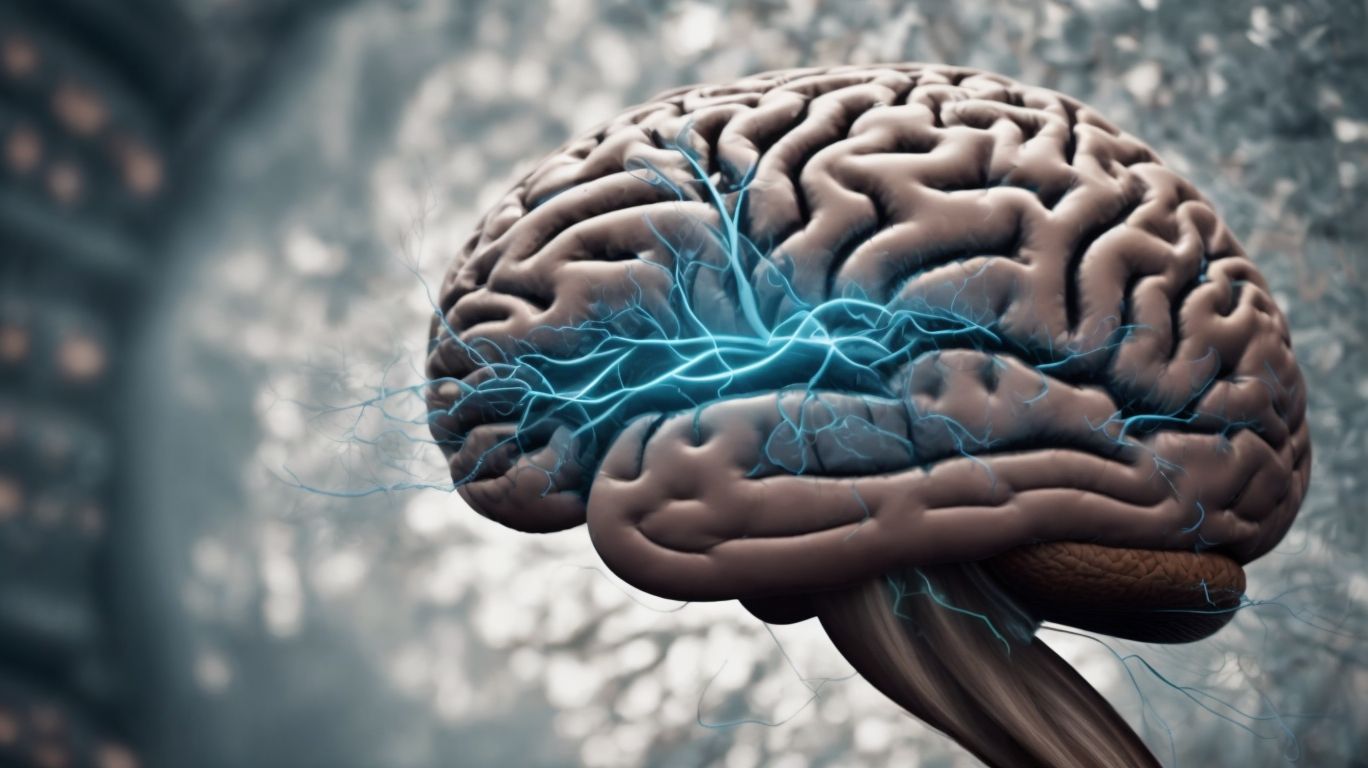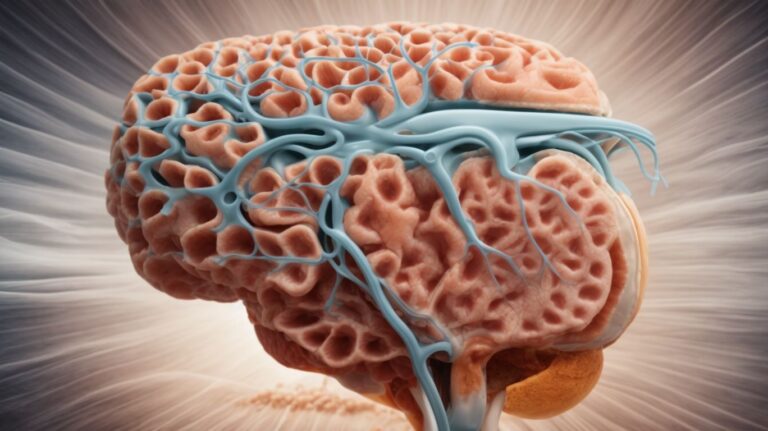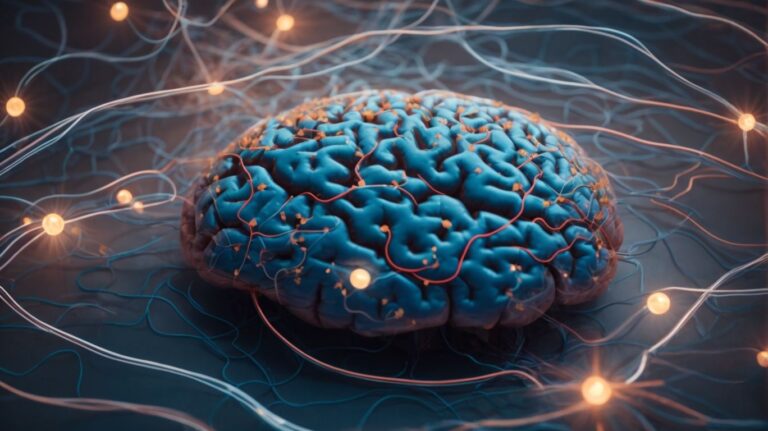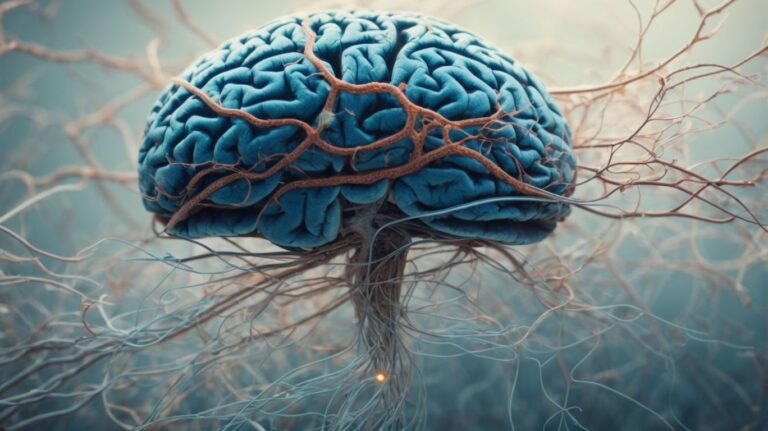The temporal lobe, a crucial part of the brain, plays a significant role in various psychological processes. From auditory and visual processing to memory formation and emotion regulation, this area of the brain affects language processing, facial recognition, and social cognition.
Understanding the functions and structures of the temporal lobe is essential in comprehending psychological phenomena. Studying the effects of temporal lobe damage through various techniques provides valuable insights into the complexities of human cognition and behavior. Let’s explore the fascinating world of the temporal lobe and its impact on psychology.
Contents
- 1 Key Takeaways:
- 2 What is the Temporal Lobe?
- 3 What are the Functions of the Temporal Lobe?
- 4 What Are the Psychological Processes Affected by the Temporal Lobe?
- 5 What Happens When the Temporal Lobe is Damaged?
- 6 How is the Temporal Lobe Studied in Psychology?
- 7 Frequently Asked Questions
- 7.1 What is the role of the temporal lobe in psychological processes?
- 7.2 How does damage to the temporal lobe affect psychological processes?
- 7.3 What is the link between the temporal lobe and language?
- 7.4 Can the temporal lobe influence emotions?
- 7.5 How does the temporal lobe contribute to memory formation?
- 7.6 What disorders are associated with dysfunction of the temporal lobe?
Key Takeaways:
- The temporal lobe is responsible for various psychological processes such as language processing, facial recognition, social cognition, and perception of time.
- Injuries to the temporal lobe can result in conditions such as auditory agnosia, prosopagnosia, amnesia, and changes in personality and emotion.
- Psychologists use various methods, including lesion studies and brain imaging techniques, to study the role of the temporal lobe in different psychological processes.
What is the Temporal Lobe?
The temporal lobe is a vital component of the brain, playing a central role in various cognitive and sensory functions.
The temporal lobe is located on the sides of the brain and plays a crucial role in processing auditory information, language comprehension, and memory retention. It also contributes to emotional stability, visual perception, and social cognition.
Additionally, the temporal lobe is responsible for forming long-term memories, making it essential for learning and recalling past experiences. It also helps in recognizing faces and objects, interpreting information related to time, and determining spatial orientation.
What are the Structures of the Temporal Lobe?
The structures of the temporal lobe encompass key regions such as Wernicke’s area, Broca’s area, and the auditory cortex, each contributing to specialized cognitive processes.
Within the temporal lobe, Wernicke’s area is primarily associated with language comprehension, allowing individuals to understand spoken and written language.
On the other hand, Broca’s area is responsible for language production and speech articulation. It plays a crucial role in forming coherent sentences and expressing thoughts verbally.
The auditory cortex, located within the temporal lobe, processes auditory information, facilitating the perception and interpretation of sounds. These regions work in harmony, creating a network that supports various aspects of language and auditory processing.
What are the Functions of the Temporal Lobe?
The temporal lobe serves crucial functions in auditory processing, memory formation, language comprehension, and emotional regulation, linking closely with the limbic system for integrated cognitive processes.
One of the primary roles of the temporal lobe is the processing of auditory information. It plays a pivotal part in distinguishing and interpreting various sounds, including speech and environmental noise, ensuring that individuals can perceive and comprehend the sound stimuli around them.
The temporal lobe contributes significantly to language comprehension, as it enables the understanding of spoken and written language, encompassing both semantic and syntactic aspects.
This intricate function involves numerous neural networks and language processing centers within the temporal lobe, allowing for the nuanced interpretation of linguistic input.
The temporal lobe is closely associated with memory formation, particularly in the consolidation and storage of long-term memories. It integrates sensory perceptions and experiences into cohesive memory traces, a process involving the hippocampus and adjacent cortical regions.
Plus its cognitive roles, the temporal lobe partakes in emotional regulation, influencing the processing and interpretation of emotional stimuli.
It harmonizes emotional responses, aiding in the understanding and management of one’s emotions, which is crucial for overall psychological well-being and social interactions.
Auditory Processing
Auditory processing, a primary function of the temporal lobe, involves complex neural mechanisms within the superior temporal gyrus to interpret and comprehend sound stimuli.
Within the superior temporal gyrus, the auditory cortex plays a crucial role in processing various attributes of sound, such as pitch, rhythm, and timbre.
As sound waves enter the ear, they are transformed into neural signals that travel through the auditory pathway to reach the temporal lobe. This intricate process involves the recognition of speech patterns, localization of sound, and discrimination of complex auditory stimuli.
Visual Processing
While not the primary site for visual processing, the temporal lobe collaborates with the occipital lobe to integrate and interpret visual information, contributing to holistic perception.
The temporal lobe plays a crucial role in the multimodal integration of sensory information, including visual stimuli. It receives processed visual input from the occipital lobe and further processes this information to support higher-order visual functions, such as facial recognition, object identification, and spatial navigation.
The temporal lobe is involved in the recognition and interpretation of complex visual stimuli, providing the necessary context and meaning to the visual information received from the occipital lobe.
This collaborative effort between the temporal and occipital lobes allows for a comprehensive understanding of the visual world.
Memory Formation and Retrieval
Memory formation and retrieval are facilitated by the temporal lobe in collaboration with the hippocampus and amygdala, orchestrating the encoding and retrieval of diverse memory types.
The temporal lobe serves as a hub for processing sensory input and converting it into memories. This region of the brain plays a pivotal role in forming explicit memories, which are conscious and can be verbally described.
Meanwhile, the hippocampus acts as a central processor, integrating new information into the network of existing memories.
As memories are formed and stored, the amygdala modulates the emotional significance of these memories, highlighting the role of personal experiences in memory consolidation.
Emotion Regulation
Emotion regulation, a pivotal function of the temporal lobe, is closely intertwined with the limbic system and the amygdala, influencing emotional processing and responses.
The temporal lobe plays a crucial role in interpreting and regulating emotions, managing social cues, and facilitating memory formation.
Its intricate connections with the limbic system, particularly the hippocampus and amygdala, enable the interpretation and processing of emotional stimuli.
The amygdala is a key player in emotional response, as it processes fear and other strong emotions. The temporal lobe’s involvement in language comprehension and visual perception further impacts emotional understanding and expression.
What Are the Psychological Processes Affected by the Temporal Lobe?
The temporal lobe exerts significant influence on diverse psychological processes, including language processing, facial recognition, social cognition, and the perception of time, shaping cognitive and interpersonal behaviors.
Language processing heavily relies on the functions of the temporal lobe, where the Wernicke’s area processes the understanding of language, while Broca’s area contributes to speech production.
The temporal lobe plays a crucial role in facial recognition, allowing individuals to identify and differentiate faces. In terms of social cognition, it assists in perceiving social cues, emotions, and intentions, influencing interpersonal interactions and relationships.
The temporal lobe contributes to the perception of time, allowing individuals to sequence events and perceive duration.
Language Processing
Language processing, facilitated by the temporal lobe and specialized regions such as Wernicke’s area and Broca’s area, underpins the comprehension and production of verbal communication.
The temporal lobe, responsible for processing auditory information and organizing language, plays a crucial role in the language processing continuum.
Within the temporal lobe, Wernicke’s area interprets and comprehends spoken and written language, while Broca’s area coordinates speech production.
The intricate processes involved in understanding and generating language involve an intricate choreography between these specialized regions, forming the foundation for the human capacity to communicate effectively.
Facial Recognition
Facial recognition, a psychological process reliant on the temporal lobe and the fusiform face area, enables individuals to identify and interpret facial stimuli with remarkable precision.
When an individual encounters a face, the visual information is processed in the temporal lobe – a region of the brain involved in various aspects of memory, visual processing, and emotional regulation.
The fusiform face area, located within the temporal lobe, is particularly specialized in recognizing faces.
This specialized area allows for the quick and accurate processing of facial features, contributing to our ability to discern between different individuals and interpret emotions based on their facial expressions.
The psychological mechanisms of facial recognition involve complex processes, including the analysis of facial features, comparison with stored facial representations in memory, and the interpretation of emotional cues.
This sophisticated interplay between the temporal lobe and the fusiform face area is essential in our everyday social interactions, enabling us to swiftly recognize familiar faces, discern subtle emotional nuances, and navigate the social landscape with ease.
Social Cognition
Social cognition, shaped by the temporal lobe and associated brain networks, encompasses the complex processes of understanding others’ mental states, fostering empathy, and navigating interpersonal interactions.
The involvement of the temporal lobe in social cognition is pivotal as it plays a crucial role in processing social information, emotions, and language comprehension. It facilitates our ability to infer and interpret others’ thoughts, intentions, and feelings, which is known as theory of mind.
This capacity is closely linked to empathy, allowing individuals to connect with and comprehend the emotions and experiences of others, enhancing social relationships and facilitating cooperation.
Perception of Time
The temporal lobe plays a pivotal role in the perception of time, integrating memory processes and cognitive mechanisms to facilitate accurate time estimation and temporal awareness.
The temporal lobe encompasses various structures, including the hippocampus, amygdala, and the primary auditory cortex, which collectively contribute to time perception.
Its close links with the limbic system underpin the integration of emotional experiences with temporal processing, thereby influencing subjective time perception.
The temporal lobe is involved in the encoding and retrieval of time-related memories, enabling individuals to gauge the duration of past events and anticipate future occurrences.
This intricate interplay between memory consolidation and temporal cognition reinforces the essential role of the temporal lobe in comprehending the passage of time.
What Happens When the Temporal Lobe is Damaged?
Damage to the temporal lobe can lead to various neurological and psychological impairments, including auditory agnosia, prosopagnosia, amnesia, and alterations in personality and emotional responses.
When auditory agnosia occurs due to temporal lobe damage, individuals may struggle to recognize familiar sounds, such as speech, music, or environmental noises, despite normal hearing.
In the case of prosopagnosia, individuals experience difficulty in recognizing faces, which can significantly impact social interactions and relationships.
The memory disturbances associated with amnesia can range from difficulty in forming new memories (anterograde amnesia) to the loss of past memories (retrograde amnesia), affecting the individual’s ability to learn new information or recall past experiences.
Temporal lobe damage can lead to changes in personality and emotional responses, manifesting as heightened irritability, impulsivity, or altered emotional regulation, which can significantly impact social and occupational functioning.
Auditory Agnosia
Auditory agnosia, a consequence of temporal lobe dysfunction, disrupts the ability to comprehend and interpret auditory signals, impacting language comprehension and auditory processing.
Auditory agnosia impacts the recognition of familiar sounds, such as speech, music, and environmental noises. This condition can make it difficult for patients to understand spoken language, distinguish between different voices, or comprehend non-verbal auditory cues like doorbells or alarms.
The primary cause of auditory agnosia is impairment of the auditory cortex, which is responsible for processing sound and speech. When this area is dysfunctional, it can result in an inability to process and interpret auditory information, leading to significant communication challenges.
Prosopagnosia
Prosopagnosia, associated with temporal lobe damage, impairs the ability to recognize familiar faces and interpret facial stimuli, affecting social interactions and interpersonal recognition.
This condition can lead to significant challenges in daily life as individuals with prosopagnosia struggle to distinguish between people they know. Even subtle changes in facial expressions can pose difficulties, making it hard to interpret social cues accurately.
Consequently, those affected may experience feelings of isolation and frustration in their interactions with others. As facial recognition plays a crucial role in developing and maintaining relationships, the impact of prosopagnosia on social dynamics cannot be overlooked.
Amnesia
Amnesia, stemming from temporal lobe dysfunction, disrupts memory formation and retrieval processes, often involving impairment of the hippocampal memory systems and associated cognitive functions.
Temporal lobe dysfunction can lead to amnesia through various mechanisms. One such mechanism is damage to the hippocampus, a crucial structure for memory consolidation. This can result in deficits in both short-term and long-term memory, impacting the individual’s ability to encode and retrieve new information.
Patients with amnesia may struggle to form new memories and experience difficulties in recalling past events.
They may also exhibit confusion about their personal history. Plus memory impairments, cognitive deficits related to attention, language, and executive function can also surface, substantially impacting daily living and social interactions.
These multifaceted effects highlight the intricate nature of amnesia and emphasize the significant role of the temporal lobe and hippocampus in memory processes.
Changes in Personality and Emotion
Temporal lobe damage can induce alterations in personality traits and emotional responses, linked to disruptions in limbic system interactions and emotional regulation mechanisms.
The temporal lobe plays a crucial role in processing sensory input and integrating it with emotional and memory-related functions.
When damage occurs in this region, it can lead to changes in emotional expression, impulse control, and social behavior.
The limbic system, which includes structures like the amygdala and hippocampus, is particularly affected, impacting the individual’s ability to regulate emotions and perceive social cues.
As a result, individuals may experience heightened emotional responses, difficulty in managing stress, and alterations in social interactions, contributing to significant disruptions in daily life.
How is the Temporal Lobe Studied in Psychology?
Psychological research on the temporal lobe encompasses diverse methodologies such as lesion studies, neuroimaging techniques, and in-depth case studies to elucidate its cognitive and neurological functions.
Lesion studies involve observing individuals with damage to the temporal lobe. This helps in understanding the specific functions of different areas within the lobe.
Neuroimaging techniques, such as fMRI and PET scans, provide insights into the brain activity and structural changes associated with temporal lobe functions.
Case studies offer detailed accounts of individuals with temporal lobe injuries. These showcase the impact on memory, language, and emotion.
Lesion Studies
Lesion studies targeting the temporal lobe have provided valuable insights into its cognitive functions and the consequences of neurological impairments, shedding light on its pivotal role in diverse cognitive processes.
The temporal lobe plays a crucial role in memory formation, language processing, and visual perception.
Lesions in specific areas of the temporal lobe have helped researchers understand how these functions are localized within the brain.
Studies have revealed the association between temporal lobe lesions and conditions such as temporal lobe epilepsy and semantic dementia, further emphasizing the significance of lesion studies in unraveling the complexities of temporal lobe function.
Brain Imaging Techniques
Advanced brain imaging techniques such as MRI and fMRI have enabled precise investigation of the temporal lobe’s neural activities and structural integrity, enhancing our understanding of its cognitive functions.
The application of MRI has allowed researchers to visualize the anatomical structures of the temporal lobe, identifying any abnormalities or damage present.
Meanwhile, functional fMRI has provided insights into the brain’s real-time activity, highlighting the specific areas of the temporal lobe that are activated during various cognitive tasks.
These techniques have significantly contributed to unveiling the intricacies of memory processing, language comprehension, and emotional responses associated with the temporal lobe.
Case Studies
In-depth case studies on individuals with temporal lobe-related neurological disorders have provided profound insights into the cognitive and psychological ramifications of temporal lobe dysfunction, enriching our knowledge through detailed research investigations.
These case studies offer a unique opportunity to delve into the intricate manifestations of conditions such as temporal lobe epilepsy, amnesia, and altered personality traits. They shed light on the diverse ways in which these disorders impact an individual’s cognition and behavior.
By examining specific cases, researchers can uncover valuable patterns and nuances that contribute to a deeper understanding of the underlying mechanisms and functional implications of temporal lobe-related neurological disorders.
Frequently Asked Questions
What is the role of the temporal lobe in psychological processes?
The temporal lobe is responsible for various psychological processes, including memory, perception, language, and emotions. It plays a crucial role in integrating sensory information and forming new memories.
How does damage to the temporal lobe affect psychological processes?
Damage to the temporal lobe can lead to various psychological issues, such as memory loss, difficulty understanding language, and changes in emotions and behavior. It can also impact a person’s ability to form new memories.
What is the link between the temporal lobe and language?
The temporal lobe is heavily involved in language processing, including understanding and producing speech. Damage to this area can result in language impairments, such as aphasia.
Can the temporal lobe influence emotions?
Yes, the temporal lobe is involved in regulating emotions and emotional responses. Damage to this area can result in changes in mood, behavior, and emotional expression.
How does the temporal lobe contribute to memory formation?
The temporal lobe plays a crucial role in encoding and consolidating new memories. It receives and processes information from different sensory systems and integrates it into meaningful memories.
What disorders are associated with dysfunction of the temporal lobe?
Damage or dysfunction of the temporal lobe has been linked to various disorders, including Alzheimer’s disease, temporal lobe epilepsy, and schizophrenia. It can also contribute to memory disorders, language impairments, and emotional disturbances.




